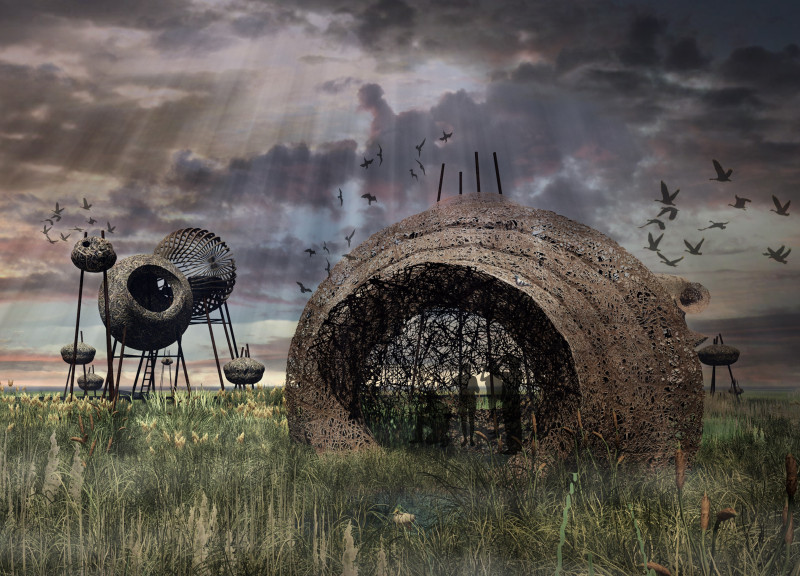5 key facts about this project
### Overview
The installation "Ornaments: An Avian Playground" is designed to encourage engagement with avian habitats through a series of innovative structures. Located within an urban context, the concept reflects on the relationship between humans and nature, particularly addressing the impact of urban development on bird environments. The design promotes interaction and exploration, creating a unique space that invites visitors to experience the natural world through a playful lens.
### Spatial Strategy and Circulation
The layout consists of several distinct structures known as "pods," each designated for specific activities: the 360 Pod, Sky Pod, Water Pod, and Nesting Pods. Pathways constructed from a lightweight steel grid facilitate movement through the site, allowing for a meandering journey rather than a straightforward path. This configuration emphasizes exploration, mirroring the migration patterns of birds and integrating visitor movement with the surrounding landscape.
### Materiality and Structural Elements
The project employs a thoughtful selection of materials, balancing durability with aesthetic appeal. The steel framework serves as the primary structural support, providing resilience while contributing an industrial contrast to the natural setting. Interior elements of the pods utilize wood, evoking natural nesting materials and reinforcing connections to avian habitats. Additionally, woven mesh is incorporated into the pod design, facilitating an interplay of light and shadow that enhances the spatial experience.
The 360 Pod features an expansive viewing platform for panoramic observation, while the Sky Pod is elevated to offer intimate birdwatching conditions. The Water Pod, designed to engage visitors at the water's edge, invites tactile interaction with the environment. Lastly, the Nesting Pods provide secluded spaces for quiet reflection on nature. In each aspect, the design respects the existing ecosystem, with elevated walkways minimizing ecological disturbance.




















